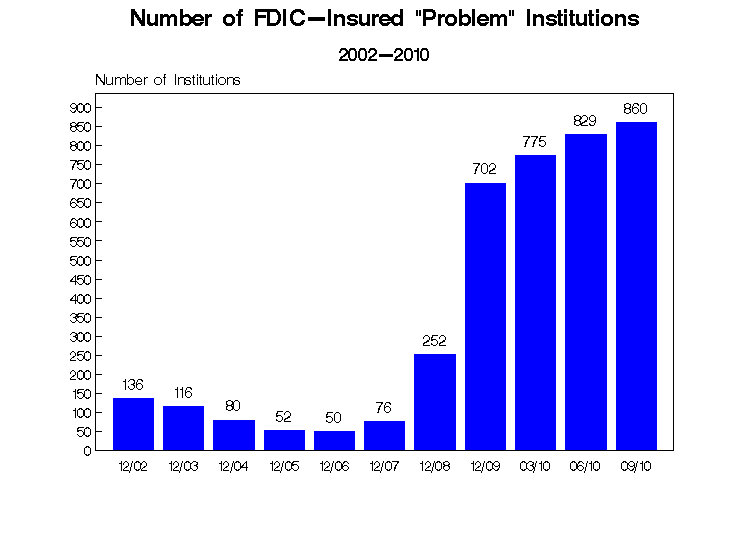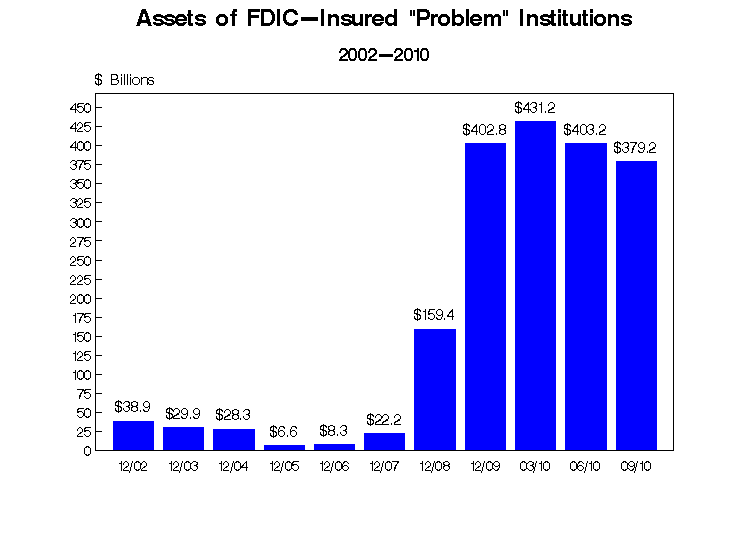November 23, 2010 – The third quarter 2010 FDIC Quarterly Banking Profile showed an increase in the number of Problem Banks from 829 to 860. The number of banks on the Problem Bank List now represents 11% of all FDIC insured institutions. Total assets of Problem Banks decreased slightly from $403 billion to $379 billion in the quarter.
The Quarterly Banking Profile highlights the ongoing trend of improving profits for the big banks and continuing problems for smaller institutions.
The average assets of Problem Banks is only $441 million, reflecting the continuing weakness of smaller banks that are unable to raise additional capital to offset losses on loan portfolios as property markets and the economy remain weak.
Although Problem Banks represent 11% of all FDIC insured institutions, total assets of Problem Banks represent only 7% of total FDIC insured deposits, reflecting that most of the Problem Banks are smaller institutions.
The FDIC Quarterly Banking Profile notes that the number of Problem Banks is the highest since the first quarter of 1993, when there were 928. The current number of Problem Banks, however, is actually worse after considering the huge reduction in the number of banks over the past 17 years. In 1993 the total number of FDIC insured institutions was 13,221 and Problem Banks represented only 7% of all banks. Since 1993, the number of banks has declined to 7,760 and the percentage of banks on the Problem Bank List today totals 11% of all banks.
Although 41 banks failed in the third quarter, the number of Problem Banks increased by 31, indicating that problem banks continue to expand. Further confirmation of the continued weakness of smaller banks can be seen by the changes in quarterly net income. Despite the heralded improvement in profits at the largest banks, nearly one in five banks (18.9%) reported a net loss for the quarter.


Speak Your Mind
You must be logged in to post a comment.